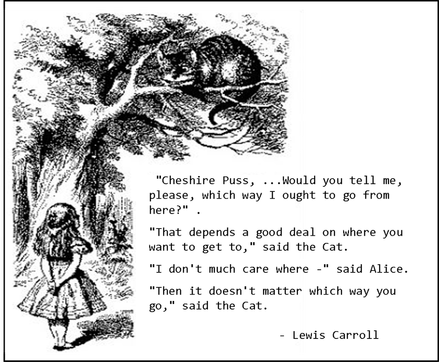Mission: Impact podcast & blog
Build a better world without becoming a martyr to your nonprofit cause
Listen on:
|
Some have argued that strategic planning is dead. They argue that the world moves too fast and changes too quickly to make planning meaningful. In today’s “VUCA” – volatile, uncertain, complex and ambiguous – a world characterized by disruption - you just cannot plan for the future. They point out that the practice of long-term planning rose to the forefront during the 50s and 60s when the rate of change was slower. Reactivity  Certainly the rate of change may seem dizzying today. Or perhaps it is the rate and volume of information coming at us that makes it seem like everything is moving too fast (but that is another topic altogether). Yet I would contend that without planning–especially longer term strategic planning or strategic thinking—you leave your organization prone to either business as usual or staying caught in a cycle of reactivity. Predicting the Future? Strategic planning does not enable you to predict the future. I think there is a hidden assumption that in order to do strategic planning effectively you have to somehow know the future. This trips people up. Even futurists cannot accurately predict the future though they spend their professional lives watching trends and making educated guesses. What is strategic planning? I like Allison and Kaye’s definition: “A systematic process through which an organization agrees on and builds key stakeholder commitment to priorities that are essential to its mission and responsive to the organizational environment.” Taking Stock Engaging in the process does enable your organization to step back, consider where you are, where you have been and set some intentions about where you want to head next. Eighty five percent of organizations say that they engage in some sort of strategic planning on a regular basis. It enables you to think about some possible futures and then make decisions about which you would like to see materialize. It does not, obviously, guarantee that you will make it all happen. Setting Intentions & Staying Flexible With flexibility built into both the plan and the process, investing the time in strategic planning sets up your organization for success. By taking stock of both external trends and internal capacities, then setting targets for how you will proactively work towards your mission, you take charge of your future. At the same time, remembering that a plan is just that – a plan – and you will need to adjust it as circumstances change. Using the process as an opportunity to define criteria for how you will make decisions about future strategic opportunities and challenges, you will be better prepared when unexpected things pop up.
Thinking of engaging in a strategic planning process with your organization and want to learn more? Get in touch with me for a complementary coaching session. |
Categories
All
Archives
July 2024

Grace Social Sector Consulting, LLC, owns the copyright in and to all content in and transcripts of the Mission: Impact podcast, as well as the Mission: Impact blog with all rights reserved, including right of publicity.
|
Telephone301-857-9335
|
info[at]gracesocialsector.com
|
Grace Social Sector Consulting, LLC, owns the copyright in and to all content in, including transcripts and audio of the Mission: Impact podcast and all content on this website, with all rights reserved, including right of publicity.
|